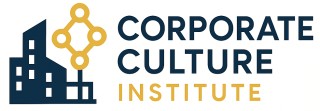
Understanding the Triad: People, Process, and Technology
Exploring the Symbiotic Relationship between People, Processes, and Technology
In the contemporary business environment, the relationship between people, processes, and technology forms the cornerstone of an effective corporate culture. This triad is often depicted as a set of three stages in transformation, offering a powerful framework for organizations striving for sustainable change. Understanding how these elements interact can lead to innovations in how companies operate and thrive.
One could visualize this relationship through icons in a powerpoint presentation, which reflect the integration of data and change management strategies. These elements work together to enhance the organization's adaptability and ensure a cohesive cultural framework. Such a powerpoint often includes a slide featuring icons of people, technology, and processes to illustrate their interconnected roles.
- People: The lifeblood of any organization, employees bring unique talents and perspectives that drive innovation and cultural development. As the powerhouse of change, they embody the organization's value system and serve as the foundation of its culture.
- Processes: The procedural backbone that ensures operational efficiency and consistency, processes guide how tasks are executed and objectives are achieved. Streamlining these process stages ensures alignment with organizational goals.
- Technology: The enabler of transformation, technology provides the tools necessary to execute processes more effectively and support the people within the organization. Utilizing a suitable technology framework can bring about improved agility and productivity.
By effectively aligning these core components, businesses can establish a cohesive, dynamic environment that promotes continuous improvement and innovation. For a deeper understanding of the framework that underscores these dynamics, you might find insights in creative ways to engage employees through office bulletin boards.
The Role of People in Corporate Culture
People as the Cornerstone of Corporate Culture
In the intricate web of corporate culture, people undeniably form the cornerstone. They are the driving force behind any successful organization, and their influence permeates every aspect of business operations. Understanding the role of people in shaping and sustaining corporate culture is crucial for any organization aiming to thrive in today’s competitive landscape.
Employees are not just resources; they are the embodiment of the company’s values and mission. Their engagement and satisfaction are pivotal in creating a positive work environment. When employees feel valued and empowered, they are more likely to contribute positively to the organization’s culture. This is where effective enhancing corporate culture with BizFusionWorks knowledge and tools can play a significant role.
Fostering a People-Centric Environment
Creating a people-centric environment involves more than just implementing policies. It requires a genuine commitment to understanding and addressing the needs and aspirations of employees. Here are some key elements to consider:
- Communication: Open and transparent communication channels are vital. Employees should feel comfortable sharing their ideas and concerns without fear of retribution.
- Recognition: Acknowledging and rewarding employees’ contributions can significantly boost morale and motivation.
- Development: Providing opportunities for professional growth and development helps employees feel invested in the organization’s future.
By focusing on these aspects, organizations can create a robust framework that supports a thriving corporate culture. This people-centric approach not only enhances employee satisfaction but also drives organizational success.
Integrating People with Processes and Technology
While people are at the heart of corporate culture, their efforts must be supported by efficient processes and innovative technology. The integration of people, process, and technology (PPT) forms a holistic approach that ensures all elements work in harmony. This synergy is essential for achieving organizational goals and fostering a culture of continuous improvement.
In the next sections, we will explore how streamlining processes and leveraging technology can further enhance corporate culture, creating a dynamic environment where people can thrive.
Streamlining Processes for a Cohesive Culture
Revamping Internal Processes for a Stronger Culture
Developing a cohesive corporate culture requires streamlining processes that align with the organization's values and goals. Seamless integration of people, process, and technology can lead to a more unified organizational framework, enabling better collaboration and innovation. Organizations must evaluate and refine their business processes to ensure they align with their strategic objectives. A well-structured process framework helps foster a sense of purpose among employees and promotes effective change management. Processes should not merely be steps but an evolving set of practices that grow with the organization, supporting data-driven decision-making and minimizing inefficiency.- Implement a stages process to map out key operational elements thoroughly. This aids in identifying bottlenecks and improving efficiency across departments.
- Incorporate technology solutions that simplify operations and allow for synchronized communication between teams using technology icons and technology ppt.
- Leverage presentation tools like PowerPoint to outline a three-stage slide process, presenting a set of strategic directions that align with company goals.
- Engage employees in the transformation journey by utilizing change management practices that focus on collective participation and organizational health.
Leveraging Technology to Foster Innovation
Harnessing Technology for Cultural Growth
In the modern business landscape, technology is not just a tool; it is a catalyst for cultural transformation. By integrating technology into the organizational framework, companies can foster innovation and enhance their corporate culture. This integration requires a strategic approach, where technology is aligned with the organization's goals and values.
Technology as a Driver of Innovation
Technology empowers employees by providing them with the tools they need to innovate and collaborate effectively. From advanced data analytics to collaborative platforms, technology enables a seamless flow of information, which is crucial for fostering a culture of innovation. Organizations can leverage technology to break down silos and encourage cross-functional collaboration, thereby enhancing the overall business processes.
Implementing a Technology Framework
To successfully integrate technology into corporate culture, businesses should adopt a structured framework. This involves identifying the right technology solutions that align with the company's objectives and ensuring that employees are adequately trained to use these tools. A well-implemented technology framework can streamline processes and improve efficiency, ultimately contributing to a cohesive organizational culture.
Balancing Technology with People and Processes
While technology plays a crucial role in enhancing corporate culture, it is essential to balance it with the other elements of the triad: people and processes. Technology should complement the human element, not replace it. By focusing on change management and ensuring that technology is integrated into existing processes, organizations can create a harmonious environment where technology, people, and processes work together to achieve common goals.
In conclusion, leveraging technology is vital for fostering innovation and enhancing corporate culture. By adopting a strategic approach and balancing technology with people and processes, organizations can create a dynamic and innovative workplace.
Balancing the Triad for Optimal Results
Synchronizing the Trio for Maximum Impact
In the modern business landscape, balancing the interlinked elements of people, process, and technology is a fine art. An effective PPT framework doesn't just enhance operational efficiency; it fortifies the organizational culture, where the triad thrives cohesively.- Integrating People and Processes: Successful organizational cultures elevate people by aligning their roles with streamlined processes. This alignment ensures that every employee, across various process stages, feels engaged and valued. It's essential to utilize change management strategies for adapting processes to meet employees' needs. Ultimately, understanding people processes not only boosts morale but also paves way for continuous improvement.
- Leveraging Process Technology: Modern businesses benefit from incorporating the right technology framework. Implementing processes technology can reduce redundancies and foster seamless operations. The aim is not to employ technology for its own sake, but to enhance existing processes, thus nurturing an innovative atmosphere. From a technology ppt to process technology slides, using data-led decisions and strategic tools transforms organizational dynamics.
- People-Driven Technological Innovations: Employees that are empowered with technology icons and tools can initiate transformational changes. Stage process involvement of employees helps in presenting set initiatives that are revolutionary. When technology is harnessed effectively, employees become pioneers, enhancing workflows that adapt quickly to changes, ensuring the business remains resilient and forward-thinking.













